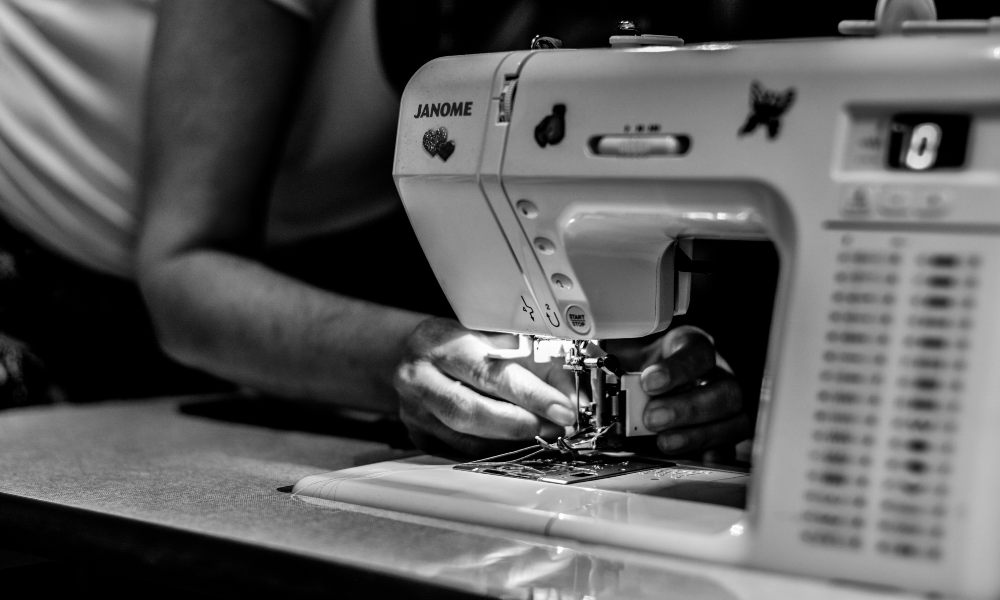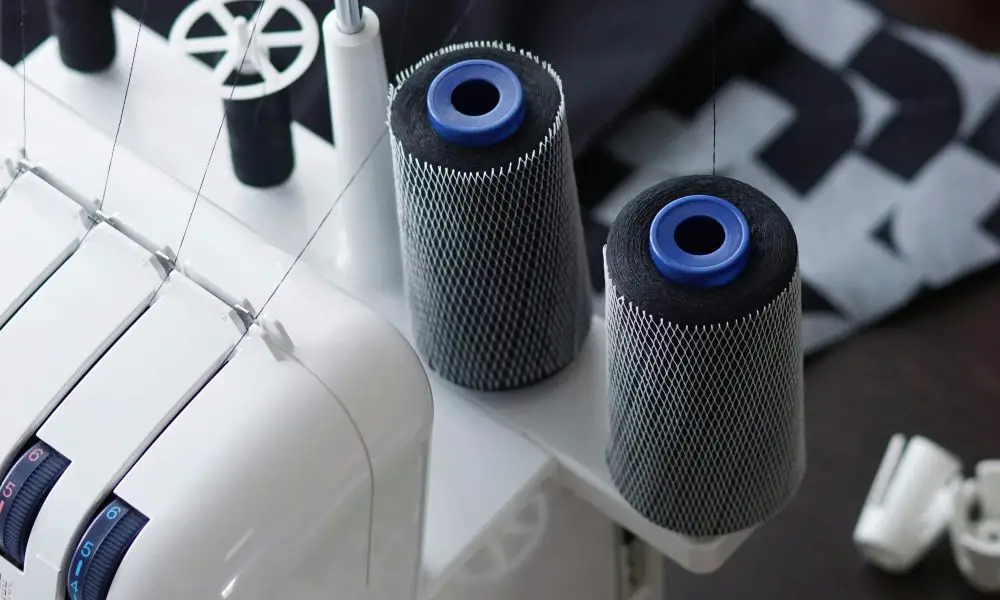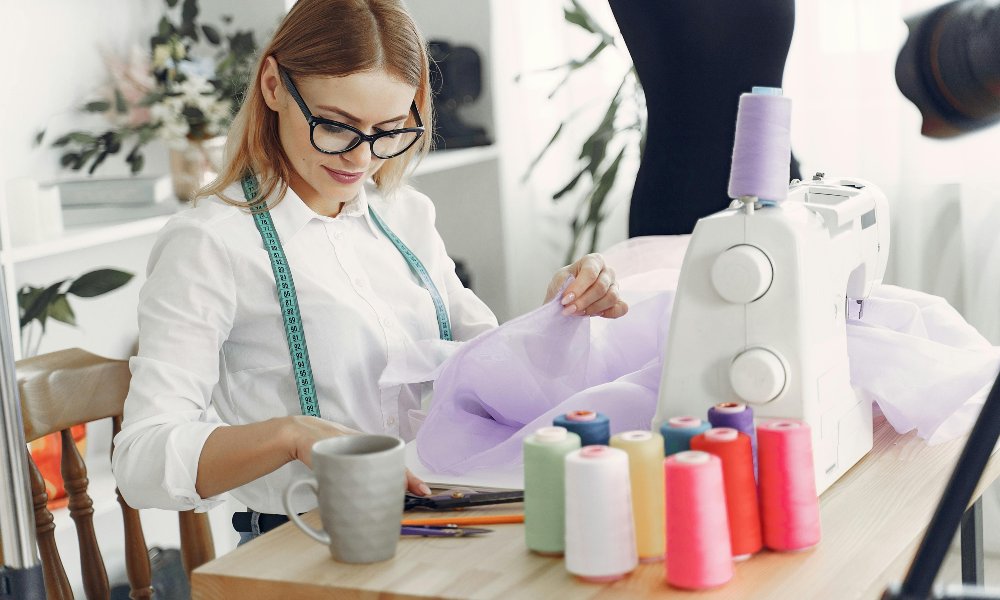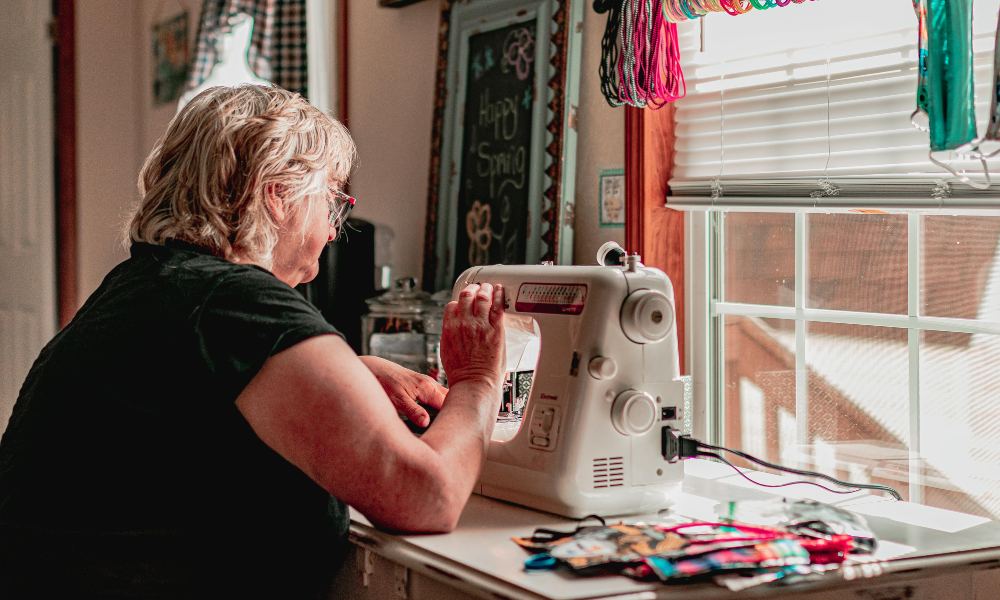Suppose you’ve ever started sewing only to find knotted messes of thread bunching up on the bottom side of your fabric. In that case, you’ve experienced one of the most frustrating common sewing machine problems – bottom thread bunching. Tangled bobbin threads that sewed unevenly and skipped stitches can make you want to toss your sewing machine out the window!
But before you rage quit your sewing project, read this guide to troubleshooting and fixing sewing machine bottom thread bunching for good.
What Causes Sewing Machine Bottom Thread Bunching?
To banish messy thread bunching for good, we need to understand what causes it in the first place. Four main culprits create those knotted bobbin threads under your fabric:
Imbalanced Tension – The tension between the upper thread and bobbin thread is off, usually with too much tension on the upper thread, causing the bobbin thread to get pulled up and bunch.
Improper Threading – If the upper or bobbin threads are threaded incorrectly on your sewing machine, it can lead to snagging and uneven stitches.
Lint Buildup – Lint and fabric fuzz clogging up the bobbin area of your sewing machine will interfere with smooth thread feeding.
Damaged Parts – Issues with the bobbin case, tension discs, needle plate, or other essential sewing machine parts affect thread tension and cause bunching.
Pinpointing the specific cause of your sewing machine’s thread bunching issue will help you fix it fast. Let’s explore each of these common culprits in more detail.
Tension Imbalance Causing Sewing Machine Thread Bunching

Proper tension balance between the upper and bobbin threads is crucial for optimal stitch formation on your sewing machine. The tension discs or springs are likely out of whack if you’re experiencing sewing machine thread bunching.
Follow these three steps to adjust thread tension and restore balance:
- Adjust Upper Thread Tension– Turn the tension dial on your sewing machine to a lower number to reduce tension on the upper thread. Make adjustments in small increments and test on scrap fabric.
- Adjust Bobbin Tension– Turn the small screw inside the bobbin case slightly counterclockwise to loosen the bobbin thread tension.
- Set Tension for Fabric– Adjust upper and bobbin tension until you achieve a balanced stitch with no bunching on your project fabric.
Getting the perfectly tuned upper and bobbin thread tension takes trial and error testing. Lighter fabrics generally require looser tension settings. Heavier fabrics need tighter tension to avoid loose stitches.
Is Improper Upper and Bobbin Threading Causing Problems?
Sometimes, sewing machine thread bunching happens simply because the upper and bobbin threads don’t get threaded properly on your machine. This can cause the threads to snag and tangle under the fabric.
Carefully follow your sewing machine’s threading diagrams and instructions to ensure the upper and bobbin threads follow the proper thread pathways. Watch for these common threading mistakes:
- Not threading the upper thread through the take-up lever
- Skipping the tension discs
- Not placing the bobbin correctly in the bobbin case
- Not securing threads under the presser foot before starting to sew
Rereading your machine meticulously often quickly solves sewing machine thread bunching issues.
Lint Buildup Can Disrupt Thread-feeding
Believe it or not, those fuzzy fabric bits and threads called lint can cause significant problems if they build up in the bobbin area of your sewing machine. Lint obstructs smooth thread feeding and movement, leading to tangled bobbin threads and thread bunching.
Regularly clean lint out with these tips:
- Use compressed air to blow lint out of the bobbin case area
- Gently brush the area around the bobbin case and tension discs
- Use a small vacuum crevice tool to suction out lint and dust
Performing maintenance to remove lint at least every few projects will prevent lint buildup from causing messy thread bunching while sewing.
Damaged Sewing Machine Parts May Need Replacing
In some cases, persistent thread bunching indicates internal sewing machine parts have become damaged and need replacement. Here are vital parts to inspect:
- Bobbin Case – Cracks or rough spots can snag thread. Try a new bobbin case if adjusting the tension doesn’t work.
- Tension Discs – Examine discs for nicks, dents, or defects that disrupt smooth thread feeding.
- Needle Plate – A burr in the needle hole can shred thread. Replace a damaged needle plate.
Consult your sewing machine manual to identify the correct replacement parts for your make and model. Installing new components will often eliminate stubborn thread bunching for good.
Conquer Frustrating Thread Bunching For Good
Sewing is no fun when you have to deal with tangled bottom threads bunching up on the underside of your fabric. It can make you want to throw in the towel! But with some handy troubleshooting techniques, you can banish irritating thread bunching for good.
Follow these tips to fix common sewing machine bottom thread bunching:
- Inspect Tension Settings: Adjust top and bottom thread tension to restore balance.
- Thread Carefully: Ensure the top and bobbin threads follow the proper pathways.
- Clean Out Lint: Remove built-up lint and fuzz from the bobbin area.
- Swap Damaged Parts: Replace any damaged components, like the Bobbin case.
FAQssewing machine bottom thread bunching
Why does my bobbin thread get tangled underneath my sewing project?
Bottom thread bunching often stems from issues like tension imbalance, incorrect threading, lint buildup, or part damage. Adjusting tension, re-threading meticulously, removing lint, and replacing defective pieces can untangle bottom threads.
What’s the best way to prevent bottom thread bunching on my machine?
Take proactive steps like frequently removing lint, promptly replacing worn needles, double-checking threading, and maintaining optimal tension. Using the correct needle, thread, and fabric for your project also helps avoid problems.
My sewing machine’s upper thread keeps bunching and tangling, too. What should I do?
Upper thread bunching has similar causes – incorrect threading, clogged lint, and tension problems. Re-thread clean lint from the upper thread path meticulously, adjust tension, and replace damaged parts like the tension discs.
I changed my needle and threaded carefully, but I still have bottom thread bunching. Now what?
When basic steps don’t fix it, issues like burrs on the needle plate, damaged bobbin case, misaligned or bent needle, and timing problems could be the culprit. This may require professional servicing and repairs.
Take time to diagnose the specific cause, whether it’s tension, threading, lint, or damage. With a little TLC, your sewing machine will stitch smoothly in no time!
Have you battled bottom thread bunching? Feel free to contribute your expertise in problem-solving for sewing in the comments section to assist fellow sewers.
***
Main image: pexels




